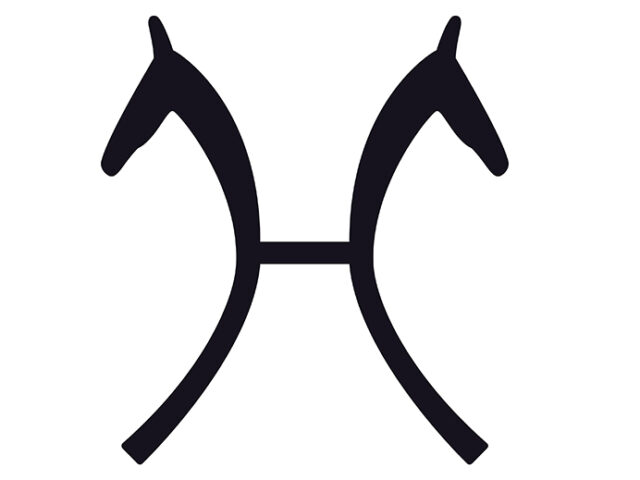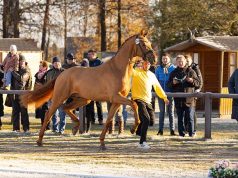By Christopher Hector
Now that the ‘W’ line has virtually disappeared from dressage breeding, it’s hard to remember back to when the Weltmeyer boom was in full swing. The imposing chestnut stallion was to be the savior of Hanoverian breeding and the answer to the uppity private stallion, just over the border in Oldenburg, Donnerhall.
Certainly when I first traveled through Lower Saxony, on the Hanoverian study tour, it was Weltmeyer, Weltmeyer, Weltmeyer, and each year more and more young sons, then grandsons were licensed by the stallion commission.
But it all started with one of the first dressage stallions in the breeding district – Woermann (1971-1988, 166 cms chestnut stallion bred by Werner Thalmann)
Woermann, Woermann, Woermann
The first public appearance of the two-and-a-half-year-old Woermann at the Hanoverian licensing in Verden 1973 signalled a total turnaround in Warmblood breeding. Woermann was the new measuring-stick for type, riding- oriented outline, and construction, but especially movement – his elastic, rhythmic, and elevated trot were previously unseen.
These impressions were confirmed in the 1973 stallion performance test. As expected, Woermann passed with flying colours and the final report certifies: ‘Energetic temperament, sufficient durability, very good rideability, jumping ability of good average, very good walk, outstanding trot, good canter – a very talented riding horse, most suitable for dressage.’ Which was timely since just about then, the sport of dressage was growing in importance and prestige, and breeders were now looking to breed for that market.
Woermann was the last and best son of the well-liked Wöhler (1950-1971). His dam stems from the solid and high-quality broodmare base of the northern Hanoverian breeding area, on the shores of the North Sea, positively influenced by her sire, the Thoroughbred stallion, Marabou xx. Wöhler himself was very much influenced by his maternal sire, the Thoroughbred, Ecco xx.
According to Claus Schridde in the 2000 edition of Berndt Eylers’ Selected Sires of Germany, Wöhler was ‘for many years the quintessence of dressage horses in the breeding region of Hanover. The liver-chestnut covered for a long time in Burlage and, thereafter, in Alterbruch from 1967 to 1971. He presented the three approved sons, Wohlklang as well as Wunsch I and Wunsch II in his first years. Whilst Wunsch I and Wunsch II were at best, average sires (the second nevertheless sired Harry Boldt’s Olympic dressage competitor, Woyceck) it would have been desirable for the noble and well-bred Wohlklang to carry on the lineage.
‘The stations where he covered (Wittingen and Luhmühlen) however had never really been known as strong producers of stallions, so that Wohlklang was restricted to furnishing high-class dressage horses and showjumpers, quality brood mares, and highly remunerated auction horses… The upholder of the Wöhler blood therefore came from another quarter. This was Woermann who resulted from the Altenbruch covering period... To read the complete article you need to be a subscriber
CLICK HERE TO SUBSCRIBE TO BREEDING NEWS
SUBSCRIBERS CAN READ THE COMPLETE ARTICLE BY LOGGING IN AND RETURNING TO THIS PAGE




